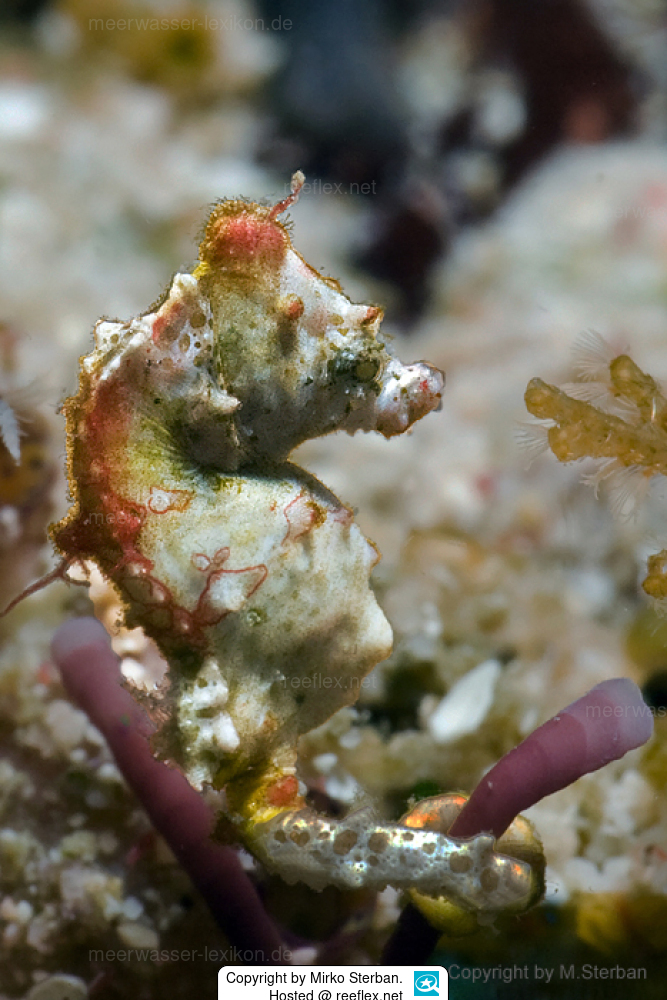Info
Synonym:
Sebastes percoides Richardson & Solander, 1842
Classification: Biota > Animalia (Kingdom) > Chordata (Phylum) > Vertebrata (Subphylum) > Gnathostomata (Superclass) > Pisces (Superclass) > Actinopterygii (Class) > Scorpaeniformes (Order) > Sebastidae (Family) > Sebastinae (Subfamily) > Helicolenus (Genus)
Feeding intake.
The fish take a long time to eat at the beginning, before the food is taken up, a close inspection is carried out. After acclimatisation, the offered frozen food is eaten without problems. It should be noted that wild-caught fish behave differently than offspring when it comes to food intake. In the case of offspring, the size of the fish purchased also plays a role in the choice of food.
You can download the minimum requirements for keeping seahorses (in accordance with EC Regulation 338/97) from the Federal Agency for Nature Conservation as a PDF here: https://meerwasser-lexikon.de/downloads/BfN_Mindestanforderung_haltung_seepferdchen_hippocampus.pdf







 Mirko Sterban, Schweiz
Mirko Sterban, Schweiz


























































